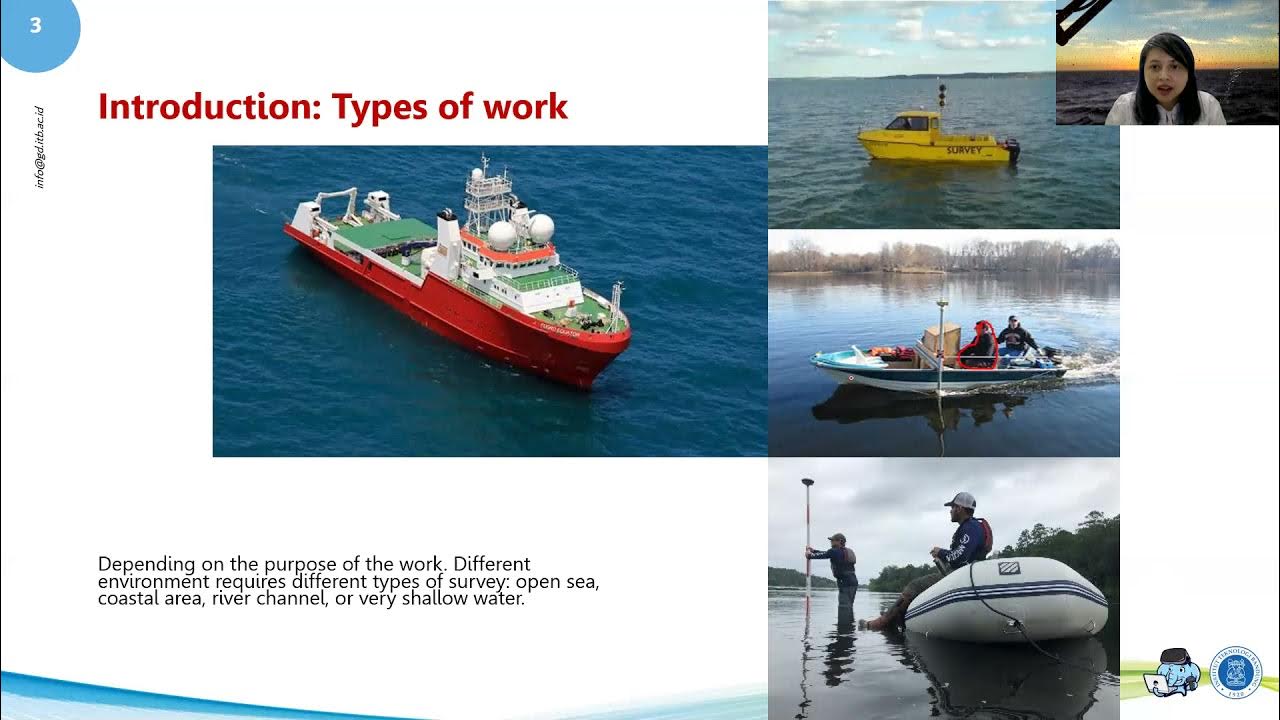Alat Ukur Pasang Surut Air Laut
Summary
TLDRIn this engaging presentation, Derby Brilian Adinara and Rifki Dafaulhaq explore the intricacies of tidal measurement in maritime metrology. They define tides as the periodic changes in sea surface height influenced by gravitational forces, emphasizing their significance for navigation, environmental studies, and coastal activities. The speakers discuss various tidal observation programs, measurement tools, and the numerous benefits tides provide, from energy generation to aiding fishermen. They also highlight essential installation practices for tidal instruments, ensuring accurate data collection for diverse applications in marine science and industry.
Takeaways
- 🌊 Takeaway 1: Success is not exclusive to the intelligent but belongs to those who continuously strive.
- 🔍 Takeaway 2: The presentation discusses maritime metrology, focusing on sea tide measurement tools.
- 📏 Takeaway 3: Sea tide is defined as the change in sea surface height influenced by gravitational forces from celestial bodies, mainly the sun and moon.
- 🔄 Takeaway 4: The difference in sea height during high and low tides is known as the tidal range.
- 🌌 Takeaway 5: Five factors affect sea tides: equilibrium theory, dynamic theory, underwater topography, strait width, and shape.
- ⚡ Takeaway 6: Sea tides have six main benefits, including energy generation, salt production, surfing activities, port operations, aquaculture, and fishing.
- 🛰 Takeaway 7: Two primary tide observation programs are GLOSS and the Geospatial Information Agency's tide stations across Indonesia.
- 📈 Takeaway 8: The purpose of measuring sea tides includes navigation safety, pollution studies, wave analysis, extreme event studies, and long-term change assessments.
- 🛠️ Takeaway 9: Various tide measuring tools include floating data, pressure type gauges, acoustic gauges, staff gauges, radar systems, and satellites.
- 🔧 Takeaway 10: Proper installation and maintenance of tide measurement equipment are crucial for accurate data collection and should consider environmental factors.
Q & A
What is the definition of tidal fluctuation in ocean water?
-Tidal fluctuation refers to the changes in sea level influenced by the gravitational forces of astronomical bodies, particularly the sun and the moon, along with the gravitational force of the Earth and centrifugal forces.
What are the five factors that cause tidal fluctuations?
-The five factors are: 1) Equilibrium theory, 2) Dynamic theory, 3) Underwater topography, 4) Width of the strait, and 5) Shape of the coastline.
What are the six benefits of tidal fluctuations mentioned in the presentation?
-The benefits include: 1) Source of electricity generation, 2) Useful in salt production, 3) Facilitate surfing activities, 4) Aid in port activities, 5) Assist in water exchange for fish habitats, and 6) Support fishermen during low tide.
What are the two main tidal observation programs discussed?
-The two programs are: 1) Global Ocean Observing System (GOOS), which is an international initiative for establishing a quality global and regional sea level network, and 2) The Geospatial Information Agency (BIG) which provides tidal data online in graphical and tabular formats.
What is the main purpose of measuring tidal fluctuations?
-The primary purpose is for navigation safety, pollution studies, wave analysis and prediction, extreme event studies, and monitoring long-term secular changes.
What are the types of instruments used to measure tidal fluctuations?
-The instruments include floating datums, pressure gauges, acoustic tide gauges, staff gauges, radar systems, and satellites.
How does a floating datum work?
-A floating datum operates based on the vertical movement of sea water detected by a buoy connected to a recording device. As water levels rise and fall, the buoy moves, converting this movement into a digital signal.
What is the principle behind acoustic tide gauges?
-Acoustic tide gauges use sound waves to measure tidal levels, relying on the time it takes for acoustic signals to travel from the water surface to the receiver and back.
What considerations are important when installing tidal measurement equipment?
-Installation considerations include ensuring easy access for maintenance, avoiding sheltered areas, and ensuring the equipment remains above water during high tide and submerged during low tide.
How can tidal fluctuation data be applied in various fields?
-Tidal data can be used for hydrographic surveys, navigation in shallow waters, large construction projects, dredging navigation channels, determining baselines for territorial waters, and supporting fishing and military operations.
Outlines

This section is available to paid users only. Please upgrade to access this part.
Upgrade NowMindmap

This section is available to paid users only. Please upgrade to access this part.
Upgrade NowKeywords

This section is available to paid users only. Please upgrade to access this part.
Upgrade NowHighlights

This section is available to paid users only. Please upgrade to access this part.
Upgrade NowTranscripts

This section is available to paid users only. Please upgrade to access this part.
Upgrade Now5.0 / 5 (0 votes)





